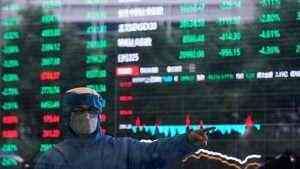
We do not manage client funds or hold custody of assets, we help users connect with relevant financial advisors. An author, teacher & investing expert with nearly two decades experience as an investment portfolio manager and chief financial officer for a real estate holding company. Additionally, companies with solid working capital are in a good position to pay unexpected short-term costs, as well as to grow their business.

Both figures can be found in the publicly disclosed financial statements for public companies, though this information may not be readily available for private companies. The inventory cycle represents the time it takes for a company to acquire raw materials or inventory, convert them into finished goods, and store them until they are sold. Though it starts the cycle with cash on hand, the company agrees to part ways with working capital with the expectation that it will receive more working capital in the future by selling the product at a profit.
Summary of Working Capital Management
The ratios are the current ratio, the collection ratio, and the inventory turnover ratio. This would clearly not be an option for companies with negative working capital, since they can’t even cover their short-term debts. It’s also part of a business strategy called working capital management, which employs three ratios to ensure a good balance between staying liquid and using resources efficiently.
We can see in the chart below that Coca-Cola’s working capital, as shown by the current ratio, has improved steadily over the last few years. Three ratios that are important in working capital management are the working capital ratio (or current ratio), the collection ratio, and the inventory turnover ratio. Companies primary consider inventory during working capital management as it may be most risky aspect of managing capital.

The cash conversion cycle (also referred to as CCC or the operating cycle) is the analytical tool of choice for determining the investment quality of two critical assets—inventory and accounts receivable. The CCC tells us the time (number of days) it takes to convert these two important assets into cash. A fast turnover rate of these assets is what creates real liquidity and is a positive indication of the quality and efficient management of inventory and receivables.
How Working Capital Affects Cash Flow
Working capital management encompasses all decisions involving a company’s current assets and current liabilities. One very important aspect of working capital management is to provide enough cash to satisfy both maturing short-term obligations and operational expenditures—keeping the company sufficiently liquid. Working capital is calculated simply by subtracting current liabilities from current assets.
Hammerhead Energy Inc. Announces Increased 2023 Production … – Kentucky Today
Hammerhead Energy Inc. Announces Increased 2023 Production ….
Posted: Wed, 06 Sep 2023 10:03:10 GMT [source]
Some small businesses have enough cash reserves to fund seasonal working capital needs. If your new venture experiences a need for short-term working capital during its first few years of operation, you will have several potential sources of funding. If you get caught off guard, you might miss out on the one big order that could put your business over the hump.
It’s an indicator of operational efficiency
In this case, it has drawn down its cash reserves in anticipation of making more money in the future from its investment. An example of this would be an online software company where customers download the product after purchase. Sometimes, a company like this can even get away with having a negative working capital. Their business https://online-accounting.net/ model, therefore, requires them to have higher working capital in the form of inventory. This is because they can’t rely on making sales if they suddenly need to pay a debt. In understanding whether a company or sector will have higher working capital needs, it’s useful to look at the business model and operating cycle.
Working capital is a bit like having cash or savings in a short-term account versus having money tied up in a house or other asset that you wouldn’t be planning to sell right away. Therefore, sellers should seriously consider risk mitigation measures including export credit insurance, export factoring, and forfaiting. Government-guaranteed export working capital programs may be available when commercial financing of the sort described earlier is not otherwise available or is insufficient to meet the seller’s needs. Governments in many economically developed countries have such programs. For instance, in the United States, the Eximbank and the SBA work together to offer such programs to US companies through participating lenders. It follows that higher working capital is better than a lower amount of working capital.
Curent Ratio
Working capital ratios, like any financial ratio, are most valuable when examined in light of trends and in comparison to industry/peer averages. For example, a deteriorating current ratio over several quarters (a decline in the company’s current ratio) could indicate a reduced ability to pay bills. Working capital is the amount of money that a company can quickly access to pay bills due within a year and to use for its day-to-day operations.
- Most businesses need short-term working capital at some point in their operations.
- “Short-term” is considered to be any assets that are to be liquidated within one year, or liabilities to be settled within one year.
- But this type of financing doesn’t make sense if you need to finance a long-term investment, like an expansion.
- The inventory turnover ratio looks at how well a company manages its inventory, which is another aspect of managing cash and cash-like assets that goes into working capital.
- CFI is the global institution behind the financial modeling and valuation analyst FMVA® Designation.
For investors, a strong capital figure often represents a good investment. That capital also reflects how well a company manages inventory, debt, payments, and collections. Negative capital (or a ratio of less than one) can denote a riskier investment. You simply subtract a company’s current liabilities from its current assets.
That is because the company has more short-term debt than short-term assets. In order to pay all of its bill as they come due, the company may need to sell long-term assets or secure external financing. Working capital is one of the most difficult what is equity method of accounting financial concepts for the small-business owner to understand. In fact, the term means a lot of different things to a lot of different people. By definition, working capital is the amount by which current assets exceed current liabilities.
- For example, accounts receivable is typically a function of monthly rent revenues.
- Companies can forecast what their working capital will look like in the future.
- A CCC of 15, for example, would indicate that cash is tied up in current assets for 15 days longer than the financing provided from accounts payable.
- The average noncash working capital as percentage of sales during the period 2008–2013 was 28.3% (Table 16.15).
Working capital is the funds a business needs to support its short-term operating activities. “Short-term” is considered to be any assets that are to be liquidated within one year, or liabilities to be settled within one year. The short-term nature of working capital differentiates it from longer-term investments in fixed assets.
Working Capital Ratio: What Is Considered a Good Ratio?
Working capital is the money used to cover all of a company’s short-term expenses, including inventory, payments on short-term debt, and day-to-day expenses—called operating expenses. Working capital is critical since it is used to keep a business operating smoothly and meet all its financial obligations within the coming year. That’s because the purpose of the section is to identify the cash impact of all assets and liabilities tied to operations, not just current assets and liabilities. Decisions relating to working capital and short-term financing are referred to as working capital management. These involve managing the relationship between a firm’s short-term assets and its short-term liabilities. The goal of working capital management is to ensure that the firm is able to continue its operations and that it has sufficient cash flow to satisfy both maturing short-term debt and upcoming operational expenses.
Moreover, in case of service businesses, the working capital is almost nil since there is nothing in stock. You can see that working capital has a direct impact on cash flow in a business. Since cash flow is the name of the game for all business owners, a good understanding of working capital is imperative to making any venture successful.
